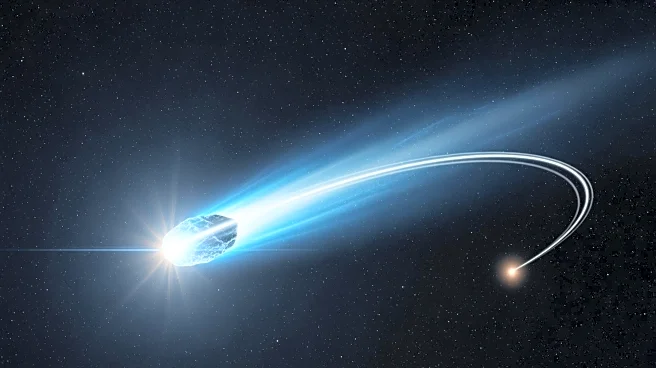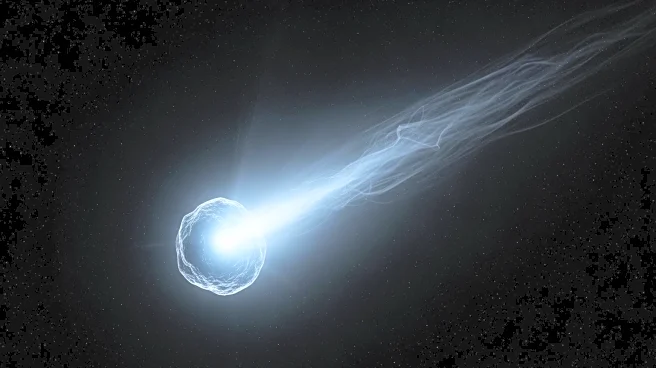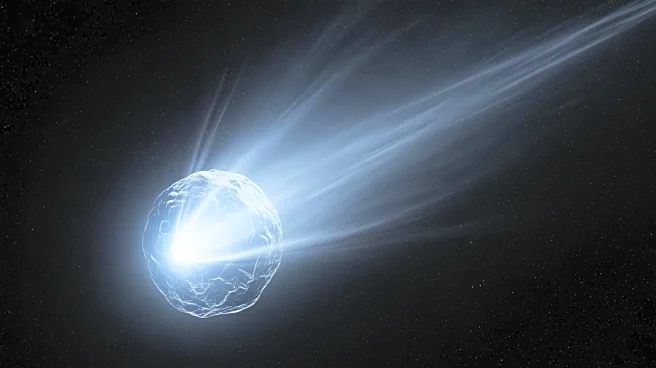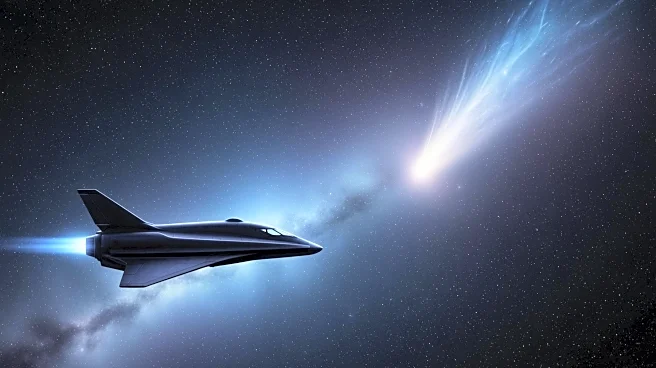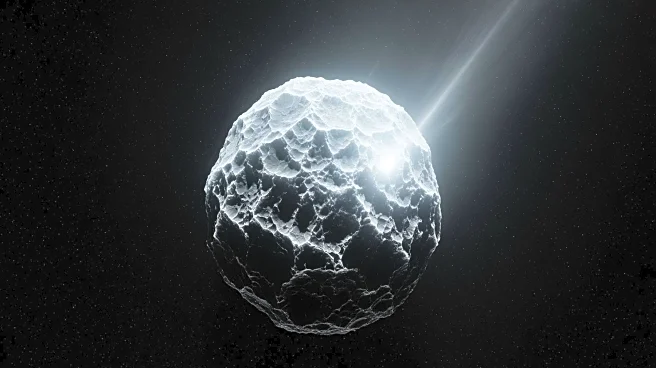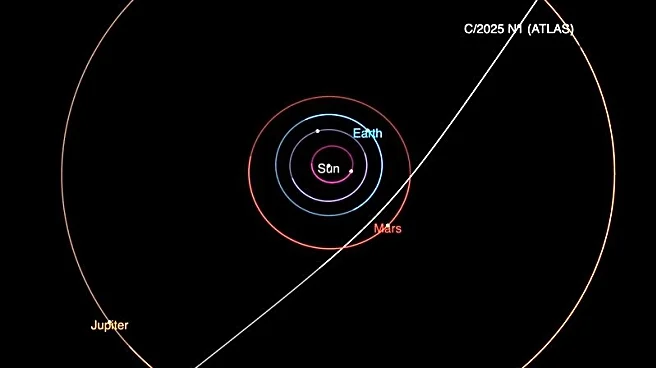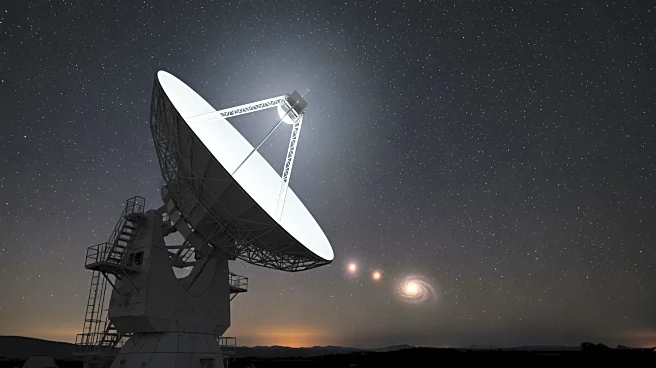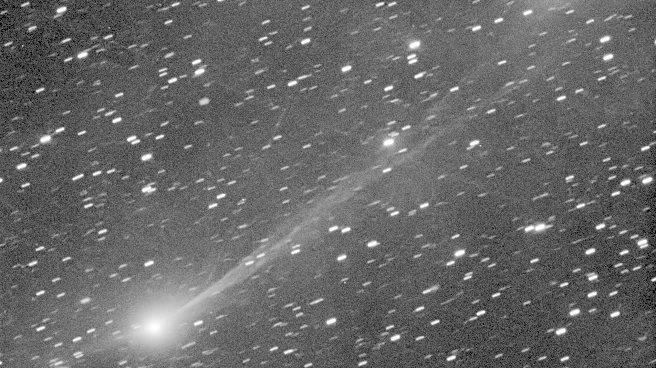What's Happening?
NASA's Perseverance rover has discovered a peculiar rock on Mars, named Phippsaksla, in the Vernodden area of Jezero Crater. This rock stands out due to its unusual shape and composition, which has led scientists to speculate about its origins. Initial
analyses using Perseverance's SuperCam instrument revealed that Phippsaksla is rich in iron and nickel, suggesting it may be an iron-nickel meteorite. Such meteorites are rare and provide insights into the early Solar System. While iron-nickel meteorites have been identified on Mars before, Phippsaksla is the first of its kind spotted by Perseverance in Jezero Crater. Further investigations are required to confirm its exact origins and whether it truly arrived from elsewhere in the solar system.
Why It's Important?
The discovery of Phippsaksla is significant as it could provide valuable information about asteroid impacts on Mars and the planet's geological history. If confirmed as an iron-nickel meteorite, it would offer insights into the composition and formation of large asteroids, contributing to our understanding of the early Solar System. This finding also highlights the ongoing success of NASA's Perseverance mission in exploring Martian rocks and terrain, which continues to uncover remarkable findings. The potential extraterrestrial nature of Phippsaksla adds a new dimension to the study of Mars, potentially influencing future research and exploration strategies.



